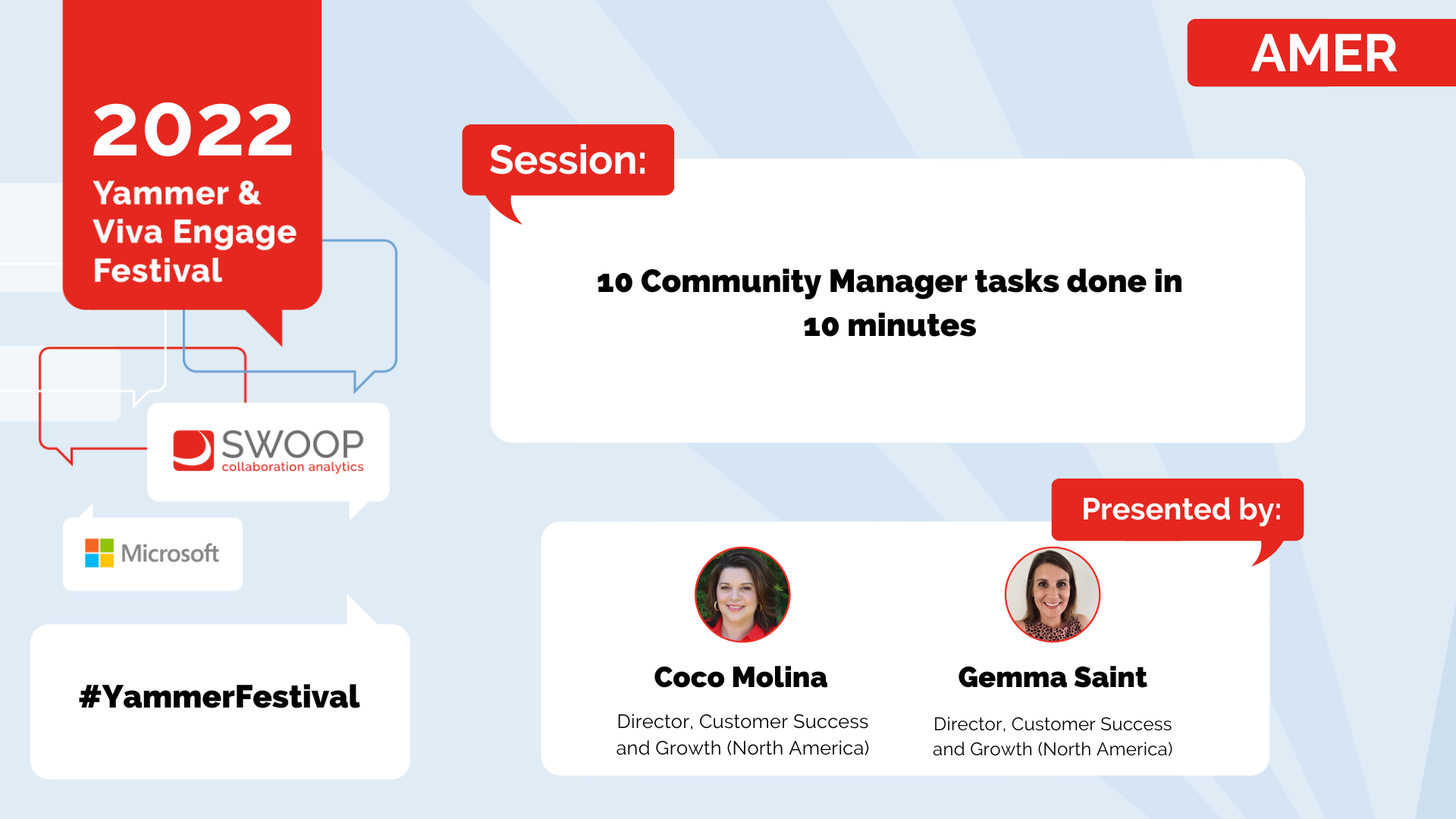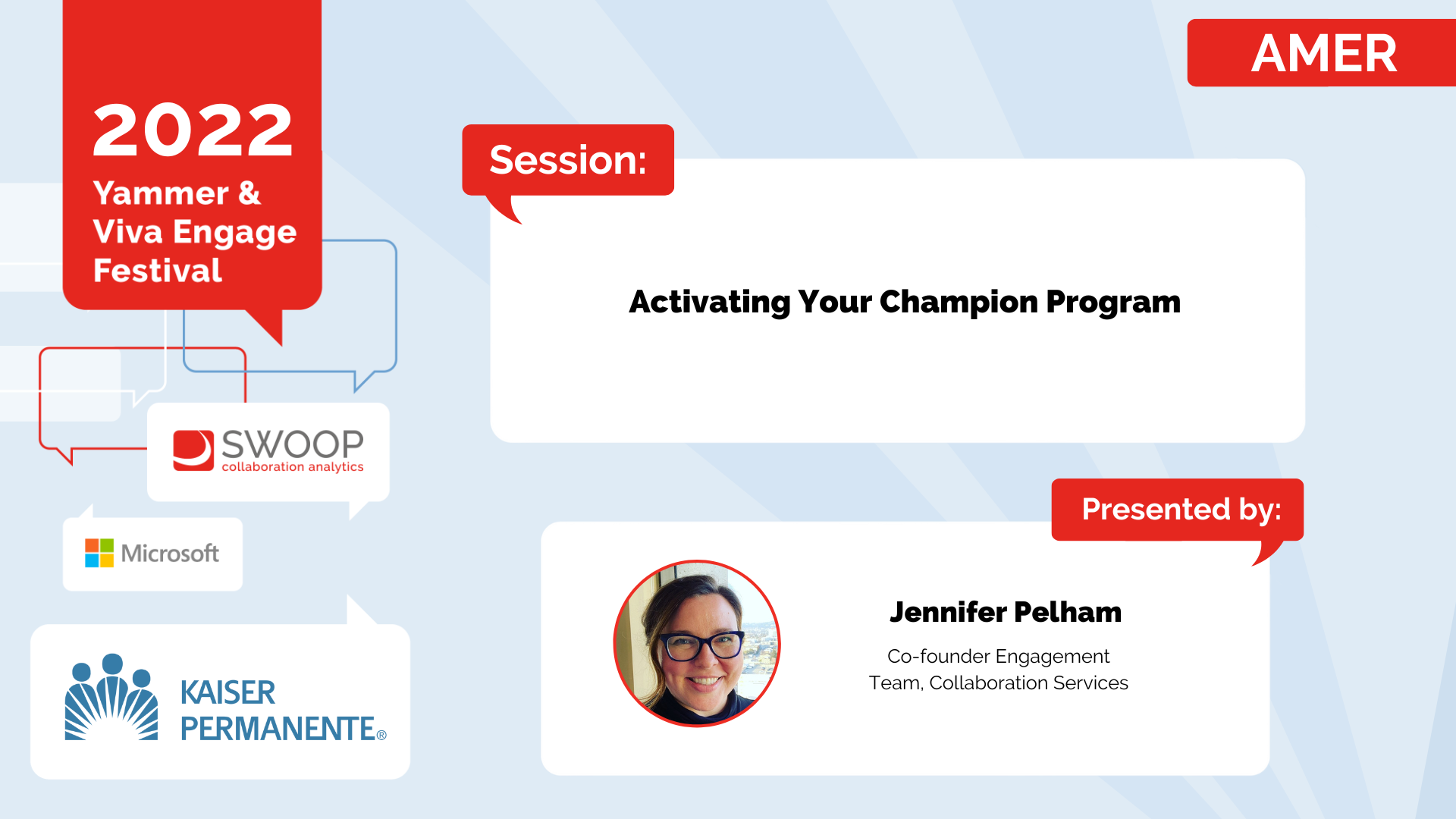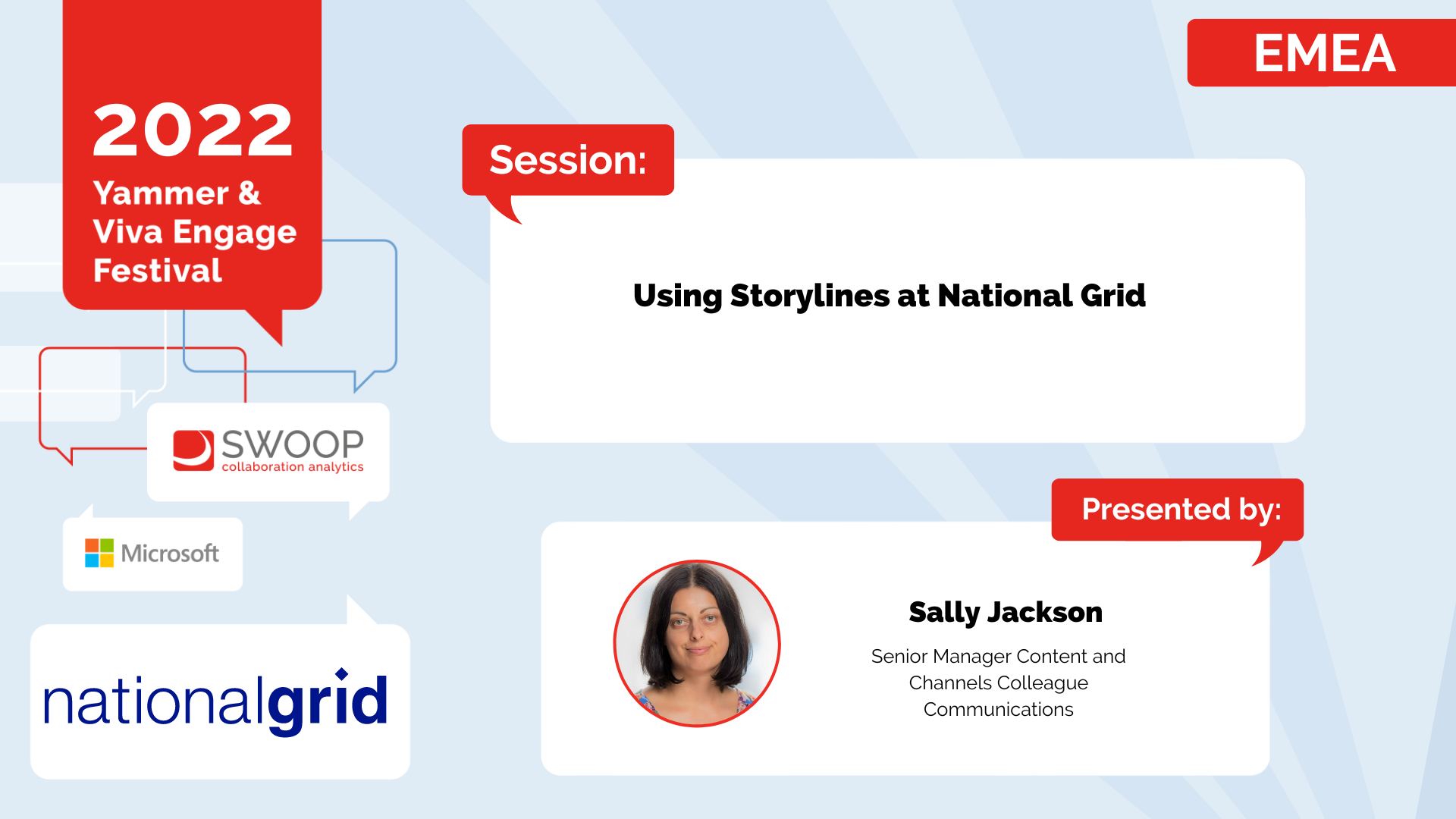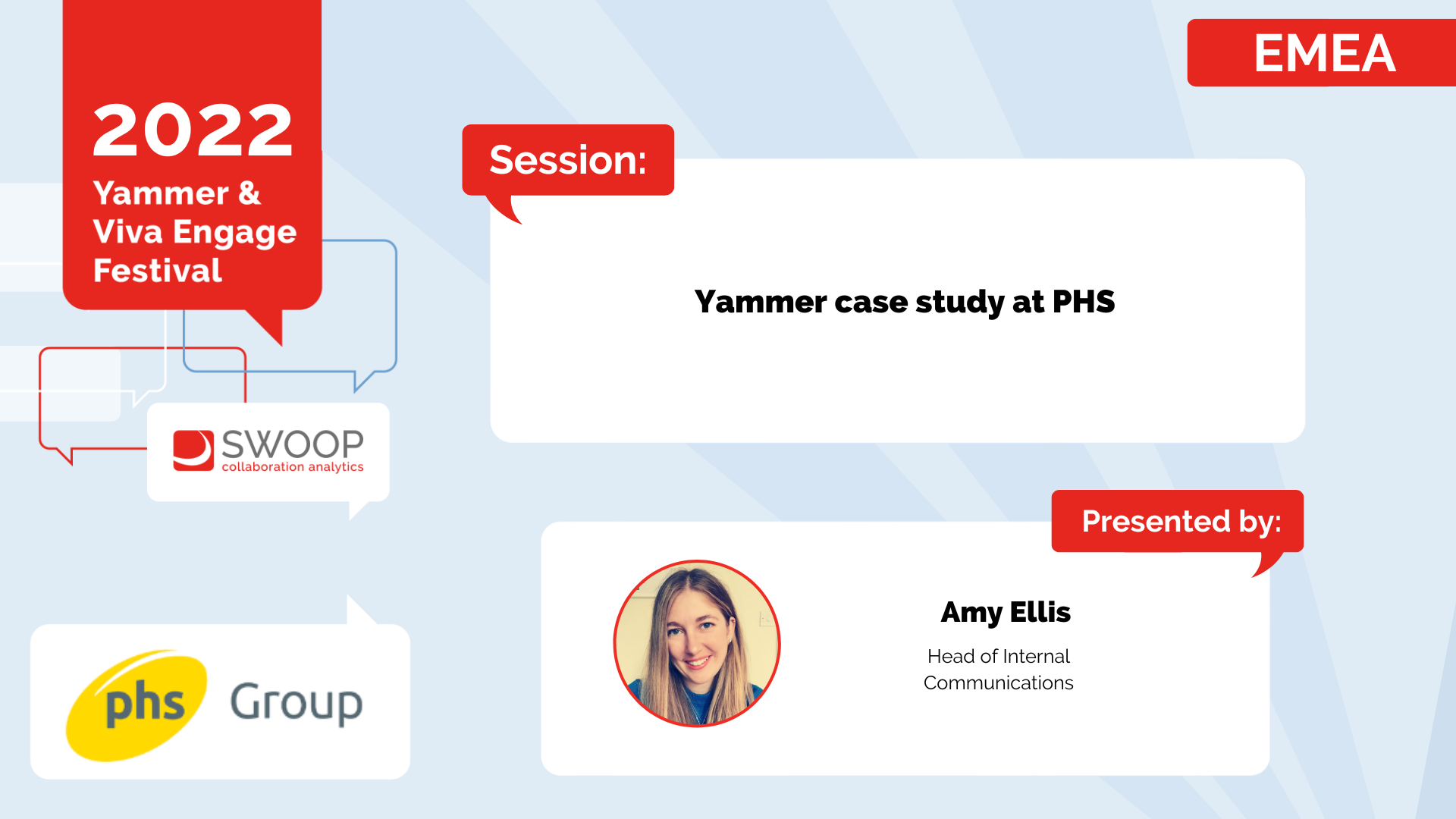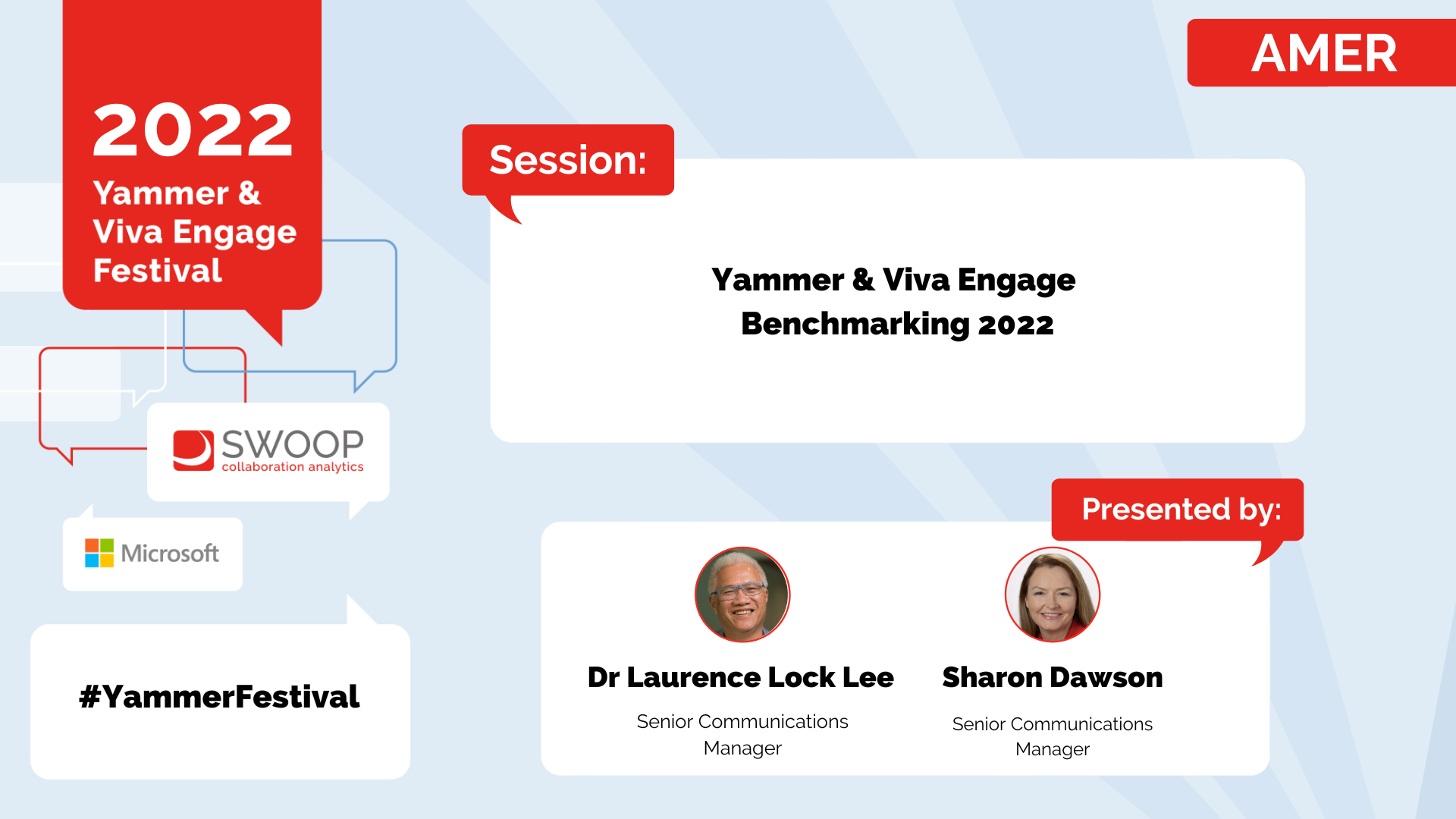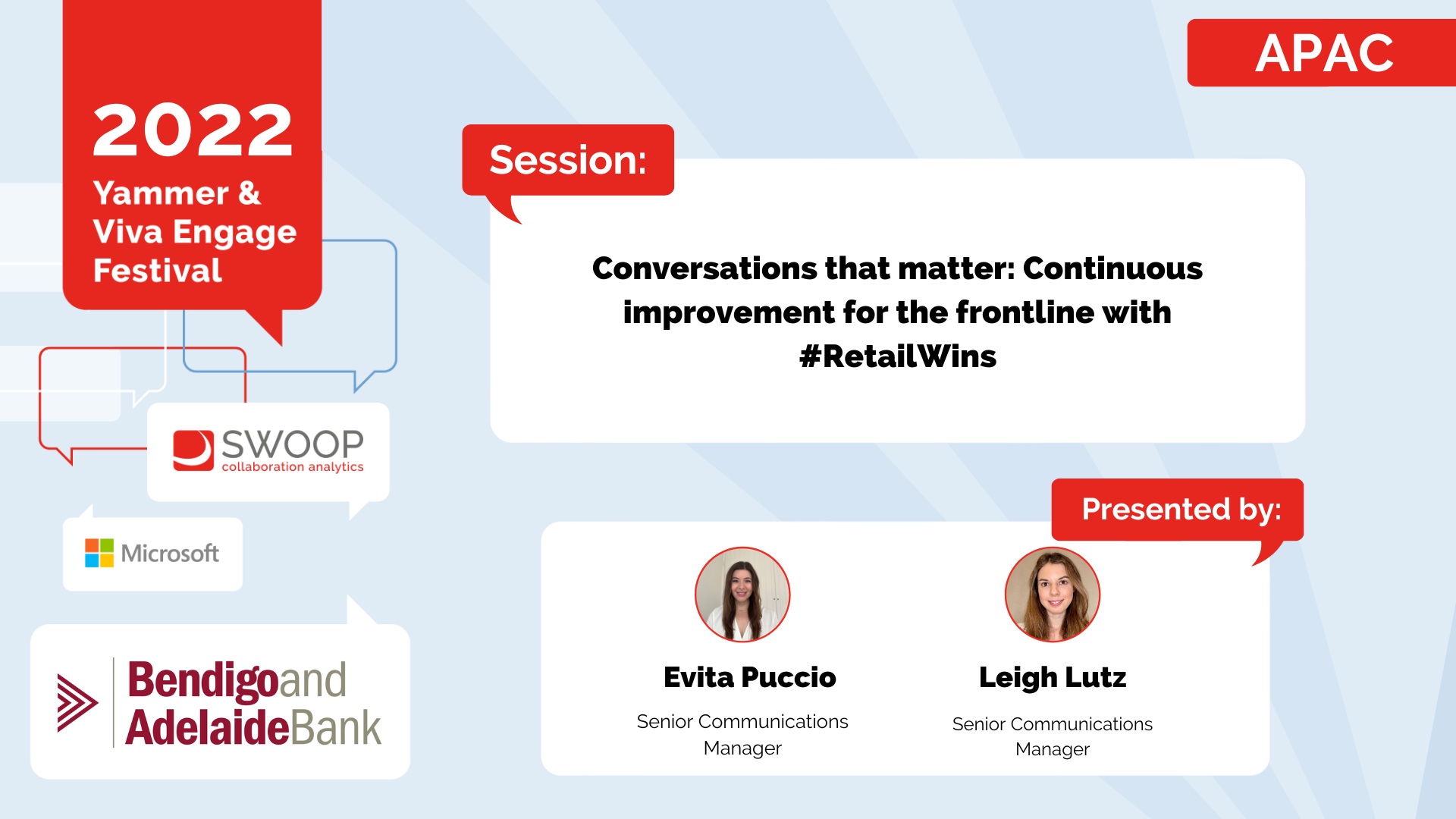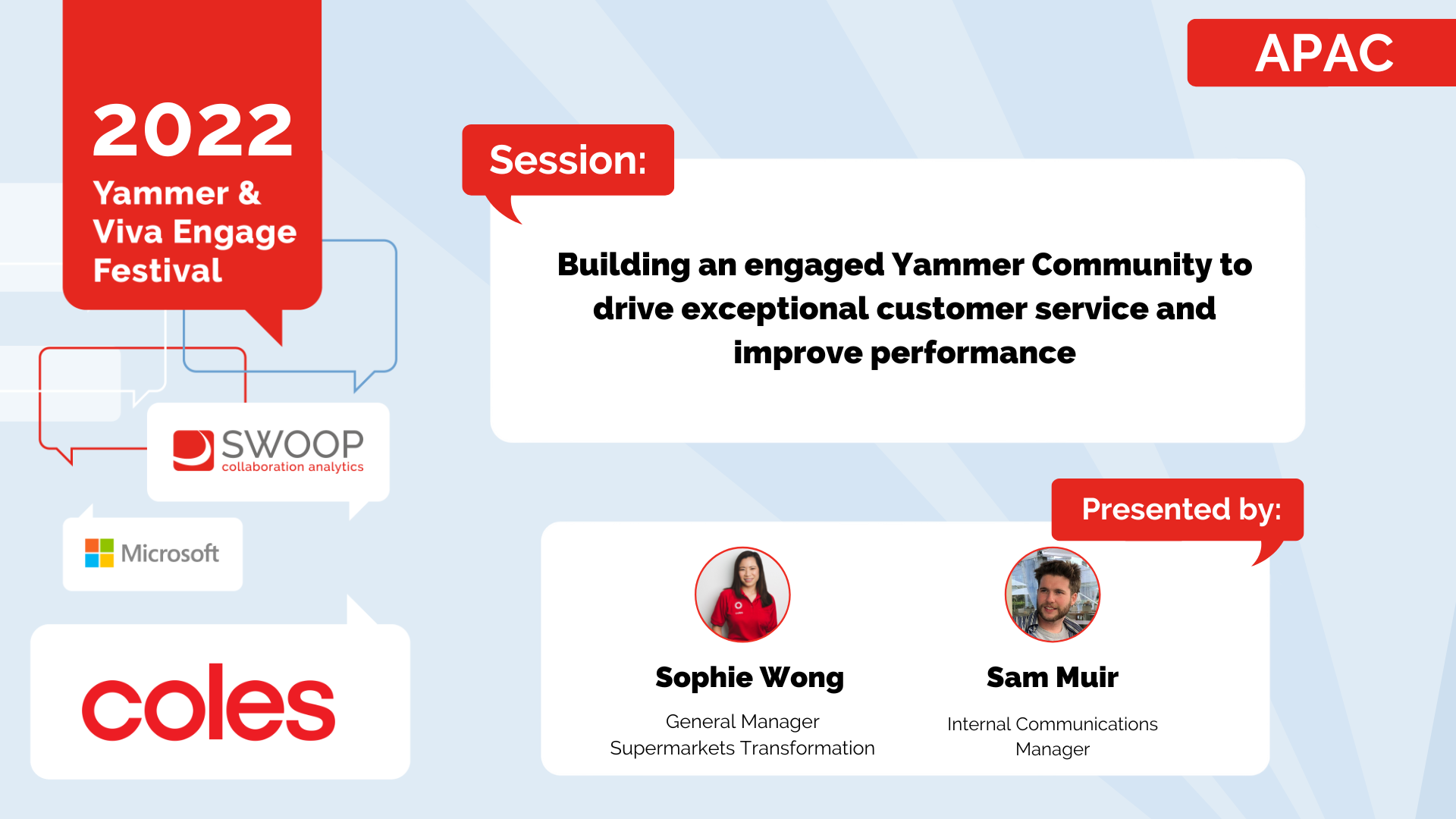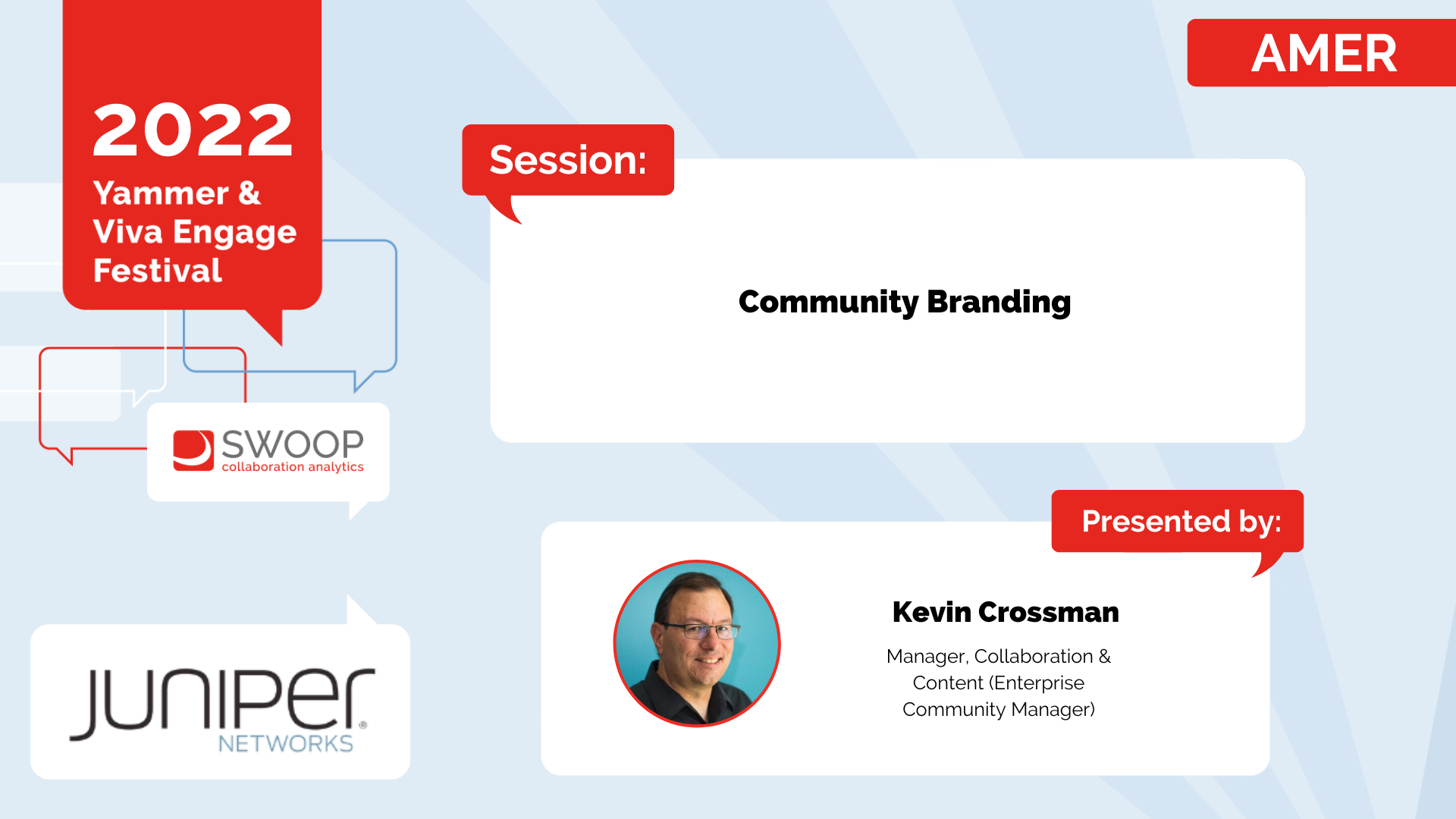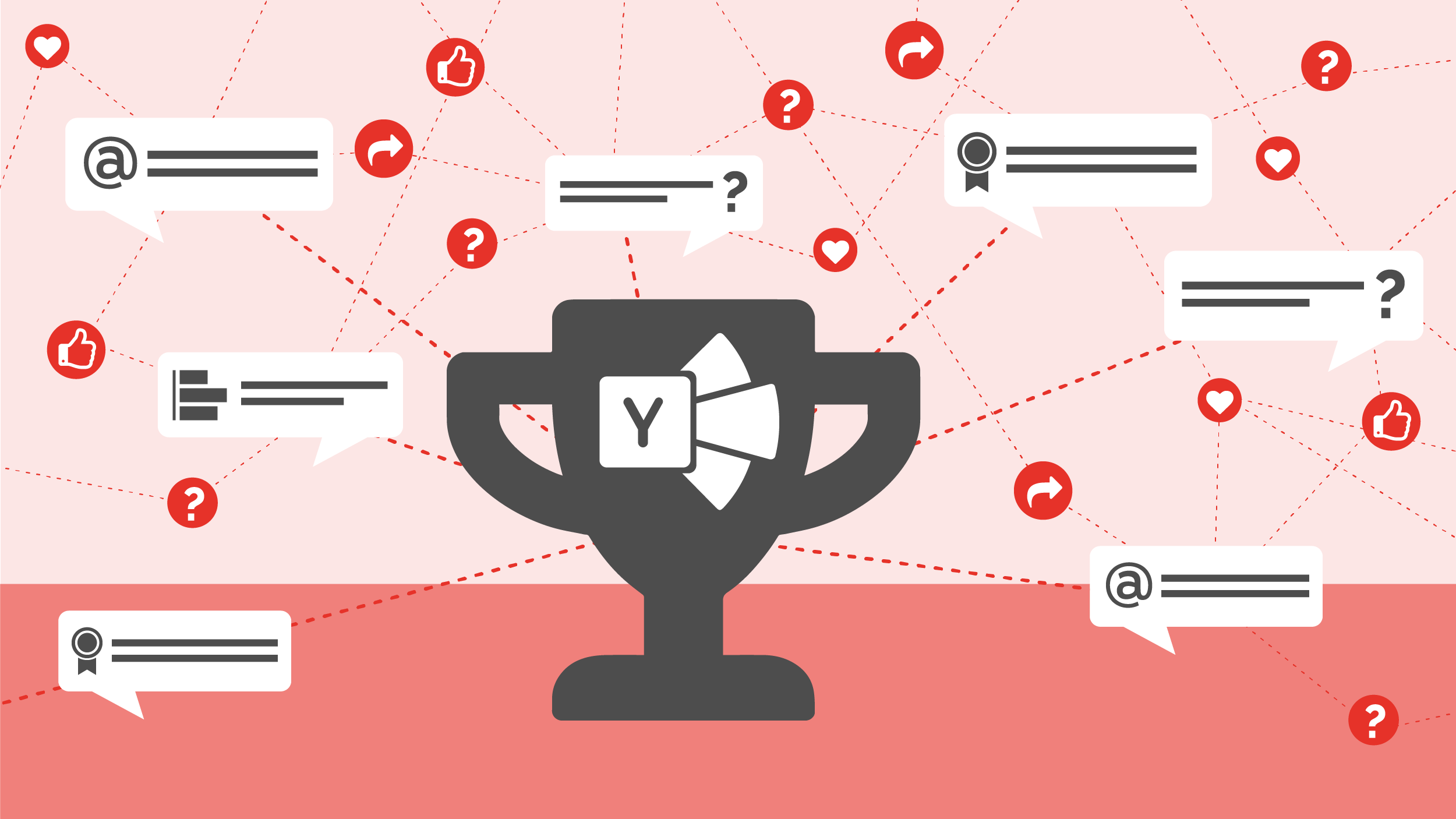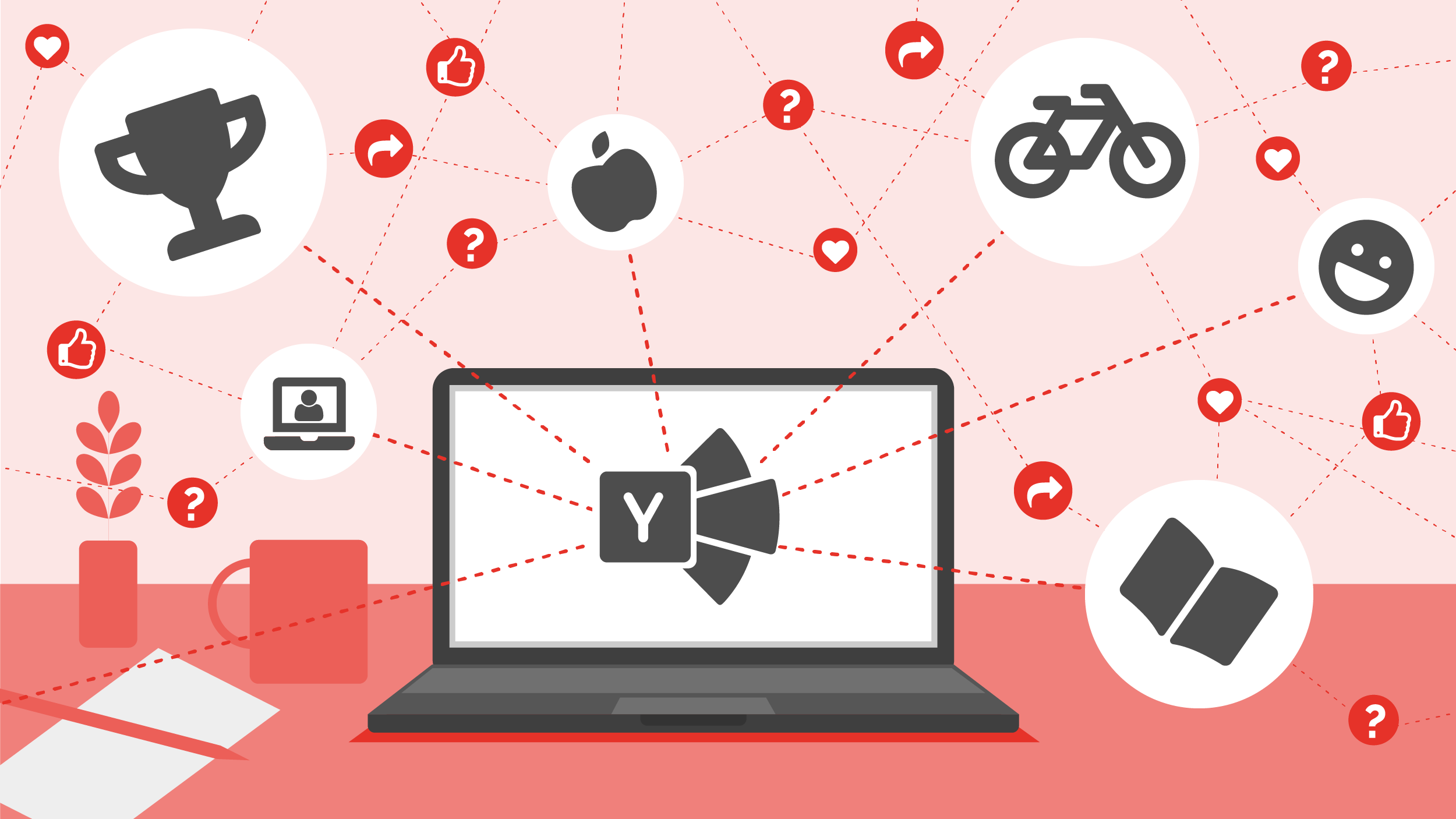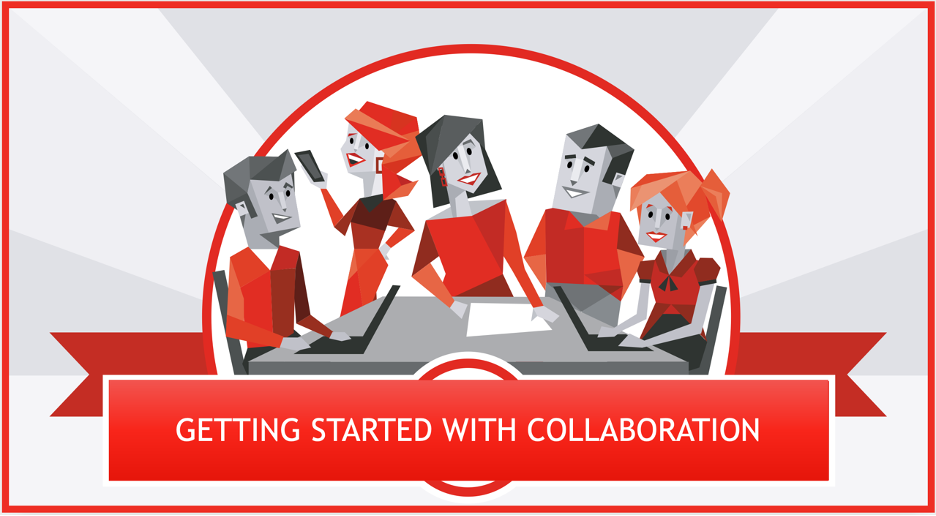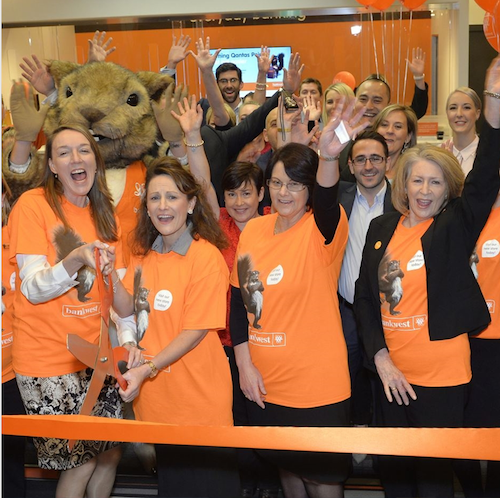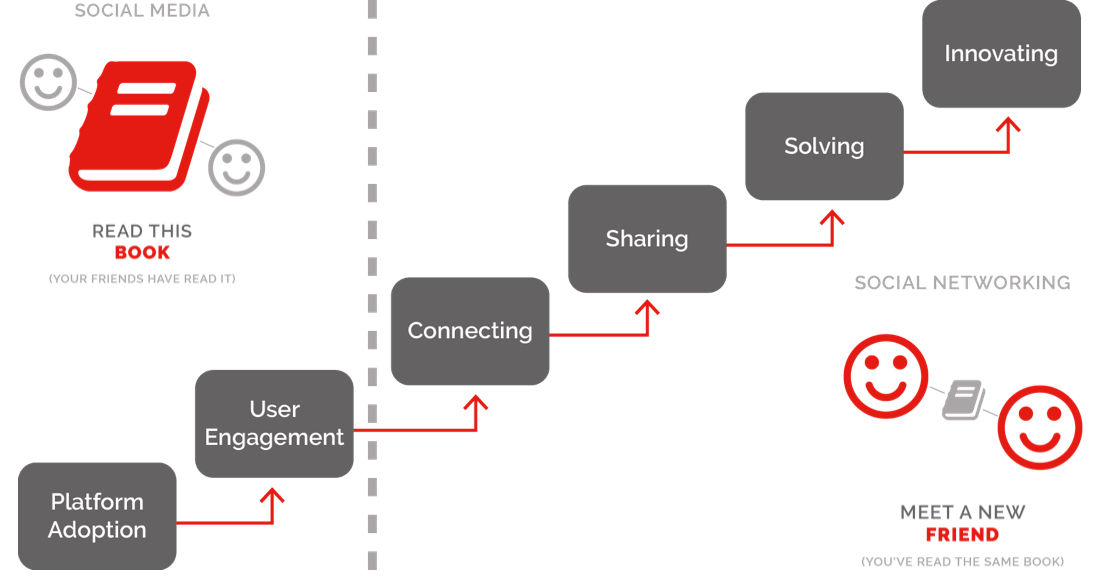SWOOP Analytics: Yammer + Viva Engage Benchmarking 2022/23
Yammer & Viva Engage Festival 2022
Join Dr Laurence Lock Lee and Sharon Dawson in showcasing the data from our most recent Yammer Benchmark Report, with some truly compelling case studies from Westpac NZ and The NRMA! The 2022/23 Yammer Benchmark Report is available for free download right now!
-
So this is our first Yammer and Viva Engage Benchmarking Report. We think it's probably maybe the last.
Next year is probably going to be the Viva Engage Benchmarking Report rather than the Yammer and Viva Engage Benchmarking Report. So this is our eighth annual benchmarking report. And the reason we do these reports is to give you some benchmarks, obviously, some goals to achieve on your Yammer network so that you know what good looks like.
Are you achieving what you should be doing across Yammer? Are you meeting goals that you'd hope to achieve? So we define all those in the benchmarking report and then they're also included in the SWOOP measurements as well. So in this report, we've got Dr. Lawrence Lockley who's SWOOP Analytics Chief Data Scientist. And he's going to walk you through the key findings of the report.
And then just as James was saying earlier, he said that the best way to learn is to learn from other customers. And that's a big part of what our benchmarking report is. In this report, we've got 11 case studies and they're so inspiring and just some really great ideas of how you can implement some things within your Yammer network to boost engagement.
So I'd really encourage you to download the report and I'm going to hand over to Laurie. Please pop any questions in the Q&A and we'll answer them as well. Yeah, thanks, Sharon.
So benchmarking reports, this is something that we do. It's built into our DNA. This is our eighth benchmarking study for Yammer.
We also do it for Teams and for M365 and we'll be doing it for SharePoint as well. And the reason we do this is because virtually from day one, our customers said, well, look, you're giving us a hell of a lot of numbers and a lot of analytics. How do we know how well we're going though? What does good look like? And so this is a very compelling question that we've had forever.
And we thought, well, the only way we can say what good looks like is to look at an awful lot of organisations, understand who are the best and setting that as the benchmark is good. So, and that's why we do this benchmarking. And you can see these numbers are pretty big, 97 organisations.
We measured their most recent six months. So most of that is up to the end of August this year. Lots of interactions, lots of employees, because we don't sample, we actually analyse what everybody is doing or hasn't done for that matter.
So it's not a sampling technique. It's what everybody does is complete sampling, they often call it. But, and that drives some quite comprehensive insights that you may or may not get from a survey, for example.
So again, this is just a highlight. So I'm going to give you the headline, the more participation, but less engagement. I'll explain what we mean by that.
And then I'll go on to the idea of this thriving and inspiring communities. So let's have a look at this last six years, six years, I guess, of benchmarking. The top line, which is the blue line, is the way that SWOOP measures participation and is active commitment participation.
In other words, you have to at least push the like button to be active. And we look at people that are, if you like, are active more than once every two weeks or something like that. So, but as you can see up to 2009, it was just climbing and climbing, which is great.
But then once COVID hit, we started to see this downward trend. The orange line is a different sort of thing in that we measure how people reciprocate. In other words, how they interact in a two-way fashion.
And other than that, that 2019, it was a bit of a dip. It had been going up as well until this year when they both went down. Now that would send alarm bells, it certainly did to me in thinking what's going on here.
But when we dug into it, we found that what was actually happening was that organisations were, there was a bigger audience for Yammer. That's probably the easiest way to put it. Most of that audience were passive participants, right? They're mostly reading or they're mostly doing very little in Yammer, but just sort of consuming, if you like.
The size of the organisations that we're analysing, on average, had gone up tremendously. So this year, the accounts, and that's not always equal to the employees, but mostly it is, nearly 50,000 on average, right? So we started in 2018, it was below 20,000. I know before that was smaller again in terms of the average.
So there is definitely a bigger audience for Yammer now. Often, we found that that was driven, as you'd be aware, by the integration of Yammer within Teams and within Outlook. So because a lot of our measures are proportional, what are the proportion of active participants, the actual engagement, the people-to-people engagement actually retreated.
So if we look at this graphic here, that underlying model underneath the blue arrow is our maturity framework, which again, we've had from day one. And we measure that maturity starting from a social media perspective, where it's mainly just content sharing through to social networking, where people are connecting with each other, a very important measure. And then finally, up to what we're calling job fulfillment, where we're starting to see those really complex problems, challenging problems resolved, seeing real innovation, what we'd call nearly disruptive innovation happening.
We're seeing diversity in the communities. We're seeing curiosity. We're saying, yeah, this is what we're all heading towards.
But as of right now in 2022, we feel that we've actually retreated from, let's say a social networking sort of performance back to on average, a social media performance. But the difference is that we've gone back with a bigger audience. And the challenge now is to move back through that social networking and job fulfillment phases with this bigger organisation, often an enterprise-wide sort of audience.
So just to give you a bit of a sense, those that haven't seen your SWOOP or haven't used SWOOP, how do we connect benchmarking to the actual platform itself? You can see with some of the widget reports here, there are goalposts. There are sort of lines here where there's a flag in between. And that's really the top, what we'd say the top 20%.
So we generally set the benchmark for good at the top 20%, and we draw that from our benchmarking studies. And those goalposts actually find their way into the actual SWOOP platform. And in fact, we'll see those goals actually retreat a little bit this year because of what we've found in the benchmarking.
Now, I want to move on quickly to this concept of thriving communities. Now, this is a paper that Klinghoff and McLuhan's published in the HBR earlier this year. And controversially, I would say, they said that Microsoft no longer measures employee engagement.
That catches your eye, doesn't it? But the message they were sending is that, that measure was less reliable than what they're finding now when they're measuring employee thriving. Now, really, that was really done by surveys. We thought, well, look, I think we can measure that in an online sense rather than sending out a survey.
Because last year in 2021, we had actually measured the happiness in communities by using the sentiment analysis. And that's, of course, Microsoft Sentiment Analysis Technology. And what we found last year was that, looking at positive and negative sentiment was that a lot of the negative sentiment wasn't toxic sentiment, was actually because the context was negative.
So for example, if you're in a cybersecurity community, your sentiment is going to be rated as negative because what you're talking about is negative. So we made the decision at that time that we shouldn't just look at the sign of the sentiment, but look at the sentiment, the energy overall. So we started to label, rather happiness, we'd say it's energy.
So we took that concept into this year's benchmarking. And this is sort of a graphic of all the measures we used to assess how good a community is. You'll see on the right side, we have two extra boxes, one for energy, which is the sentiment, and also for growth, because clearly when you're talking about something that's thriving, it's growing.
So those two extra measures, and we weighted that at 50%, because we wanted to really sort of bring out what communities really were thriving and sort of look at that concept that Microsoft promoted. What does this look like in a continuous sense, rather than just through a survey? And what we found was that on average, and we found about 300 out of the 3000 communities, we had about 350 were identified as thriving. They were four times larger than those that weren't thriving.
We found that they were at 40% higher levels of active participation in these thriving communities. We found that when we compared them to last year's performance assessment, which didn't have the thriving parts, they were 90% higher than on average. So in other words, Microsoft really has got something here in terms of the thriving communities.
There is energy, there is participation, there is diversity, all the things that we're looking for from communities. So who were they? We're not going to name them individually, but there was certainly quite a number of the purpose-driven communities, the LGBTQs, the vaccinations, the sustainability communities. Here's an example post from one of those.
There was also, what was something really quite pleasing to us is that the frontline, there's a lot of thriving connection at the frontline, which I might say in the past, Yammer had been criticised for not really having anything for the frontline. Well, that's changed now. And there's no doubt a number of case studies, and we're hearing them even in the festival now about how energising the frontline is when they're connected through Yammer.
And we're both able to do that now. And of course, we've got the non, what we call the social communities, the dad jokes, the pets, and so forth. They've always been there.
And there was certainly a lot of thriving communities here. And I think you can see the trend here that these communities are engaging more of a whole of organisation, right? So some of them actually being, some of we found that some of them were actually run in the all company as campaigns and so forth. So we are seeing this whole of organisation sort of engagement happening now.
And this one in particular, I like this because this particular one was a community that was established by the ANZ Bank in Australia, but it was their Philippines community. And it was really a group that was set up to help the IT people help their working from home sort of staff set up their technology so that they can be just as productive. But this particular lady we interviewed, she'd actually hijacked the committee in some way because she had a real passion for sustainability and growing her own food at home.
And so she started sharing tips about growing food at home, giving away plants, and it really took over this sort of thing. And what was lovely about this, I thought was that ANZ actually encouraged it. They actually thought this was wonderful.
It wasn't like, no, this community is meant to be helped, a tech community, but they just let it run and let the community grow organically. And I think that was a wonderful sort of thing to have. So I wanted to hand over now to Sharon, because not only do we want to acknowledge our collaboration champions, the richness in the case studies are something that we've really valued in our reports and our customers have valued that.
And it's also really a point of validation for us. So I work with the numbers. I say what I think is good, but I don't really know what's good until we start talking to people that we identify that are good.
And thankfully, that's certainly been the case over the eight years of benchmarking we've done. So back over to you, Sharon. Thank you very much, Laurie.
And this is the part that I love the most about what we do at SWOOP, is actually talking to you guys, talking to the customers and learning from the best and sharing those stories so we can all learn from each other. So with our collaboration champions this year, we had two categories. The first one was our overall collaboration champion.
So that took into account every Yammer community within your network. So these are the high performing and the low performing ones. And in the Americas, we came up with a large, medium and small size winners.
So our large size winner this year was a US health insurer who chose not to be named this year, but I've got to do a shout out. The Home Depot was less than a point behind. I think that's right, isn't it, Laurie? Less than a point out of all these measures, but behind this top one.
So, so close. However, the Home Depot was absolutely our standout for the most thriving community. So the Home Depot had, I see Ty's comments there.
Congratulations, Ty. But they had three communities within the top 10 for most thriving. So I'm going to talk to one of those because it's really interesting, I thought.
Number two for the Americas was a global publishing company who chose not to be named this year. And number one position was our regular high performer, Real Foundations, which has its headquarters based in Texas, but is a global real estate consulting company. So if anyone's on from Real Foundations, congratulations.
You guys are amazing. So I'm just going to talk through some of the case studies that I think might resonate with you. Laurie, can we move to the first screen? And for the first time this year, the overall number one Yemen network for our champions, and this was taking into account every single Yemen community within their network, was Westpac New Zealand, which is one of the big banks in the APAC region.
And this was the New Zealand branch. So they have a separate Yemen network to the rest of the Westpac group. So this is a medium-sized organisation, just under 5,000 employees.
And it's the first time a medium-sized or anything other than a small size has come in at number one for our collaboration champions. What was interesting though, is as Laurie was talking about earlier, there's been a bit of a slide in some of the measures. So higher readership, but lower active participation.
And when we went and told Westpac New Zealand that they were number one, they were quite surprised because they had a drop in quite a few SWOOP measures. So they were not expecting to be number one. I asked them, why do you think there's been this drop? And I wonder if this resonates with you.
They were saying, with two years of COVID and lockdowns and everyone working from home and relying on digital communications, there was a little bit of communication fatigue. And so they weren't really surprised that there was more readership, but less people actually participating. Don't know whether that resonates with you guys, but as a result, Westpac New Zealand, they're very purposeful about how they use Yammer.
And they really try to bring in a lot of trust into Yammer. So, and they have achieved this. This hasn't happened overnight.
These guys have been working on this for about five years. They've been amongst our benchmarking high performers. And some of the ways they build that trust is just bringing a lot of fun to Yammer and building relationships.
So they can be really simple things. Like at the moment, they're trying to get people to start to come back to the office. So for example, I think it's on Thursdays, they have food trucks coming in to the Auckland office.
And so they'll take photos of what's on offer at the food trucks, post it on Yammer, and just start to create a little bit of fun that way. Funny comments, jokes, that type of thing. So this post here is a bit of an example of some of the trust that's built on Westpac New Zealand's Yammer community.
This is their most engaged post for 2022. And it was, for the past 12 months, actually, I think it was last year, it was a campaign to try to get 90% of the New Zealand population vaccinated against COVID or vaccinated for COVID-19. So I know talking from some of our US customers, this has been a pretty contentious issue.
And it hasn't always been smooth sailing on a lot of Yammer networks. You get a lot of anti-vax opinions as well. However, at Westpac New Zealand, they asked what are people getting vaccinated for? And as I said, it became their most engaging post, but it was also really positive.
People started to share very personal and very emotive stories. You'll see some of the examples here. There was one where someone's wife was undergoing cancer, so he was getting vaccinated to be safe for her.
On the right-hand side, you'll see a video that was shared with an employee with his son talking about he was getting vaccinated to keep his family safe. I just thought it was a really nice example of once trust is built in these networks, people are able to share very personal and very emotive stories and feel that support from their employees. So a really lovely example.
Check out the report and you'll find more. We'll move on to the next one. And I'm sticking with Westpac New Zealand here because this was a campaign.
It was the first time that they had deliberately done an external marketing campaign alongside or in conjunction with an internal Yammer campaign. So the campaign was to attract first home buyers to come to Westpac New Zealand. And so along with all their TV ads and social media ads, they did a Yammer campaign.
And in the Yammer campaign, they asked each Westpac branch to share what they were doing to help boost this first home buyers campaign that they were running. So you can see there there's photos of what they were doing in branches. And right down on the bottom right-hand corner, there's a really great example of a bank manager sharing how he helped a customer qualify for a home loan and then shared that knowledge on Yammer.
Again, so other bank managers are able to tap into that information. So this whole campaign on Yammer was tracked with hashtags and followed on Swoop. And so being a bank, they were very much into their data.
So they love the data from Swoop. And you'll see just in the middle at the bottom there, there's a quote from the regional manager of the Auckland Central East. And he was saying that there was absolutely a return on investment through using Yammer.
So just a really great example that Yammer is not just about having fun and connecting people, it can actually bring ROI to your organisation. So I'm going to move on to the next one. Ty, I saw your messages.
So feel free to jump in and join us on this one. This is about the Home Depot's most thriving community. And this community was the Home Depot Measurement Services.
And again, Ty, if I've got this wrong, let me know. But basically this was set up to help associates on the Home Depot shop floor get answers for customers. So here's an example about flooring measures.
And the associate in store can pop a question onto Yammer. And then usually, certainly within an hour, they get an answer from the measurement services community. So ultimately it's just giving customers their answers and a better service very, very quickly.
What we thought was really interesting, and Ty, I hope you don't mind, this is a bit of spooking for Swoop. You'll see on the right hand side, we've got the activity by time measure and the response rate measure. These actually aren't the Home Depot's, this isn't the Home Depot's data on the right hand side.
On the left hand side, they are the Home Depot's Yammer posts. But these were just examples. So in order to get customers the best results, they scheduled their shifts around when people were asking these questions on Yammer.
So they followed the activity by time measure on Swoop. And accordingly, scheduled their shifts around when most people are asking questions. So again, just a really clever way of giving customers a better service because they're getting answers to customers and results much, much quicker.
So happy customers, happy associates in store as well. We're going to move on to the next one. And this is the NRMA.
So this is equivalent to the AAA. Is that right, Coco? The AAA in the US, roadside assistance. It also offers a heap of other things like lots of insurances and stuff.
Great. So the CEO of Motoring and Membership is Emma Harrington. And I absolutely love this story.
So I'd totally recommend you read it. Four years ago, they started Yammer at the NRMA. And she said she was pretty anxious and a bit nervous to start to share her ideas and her thoughts on Yammer.
But her internal communications team at the time was saying to her, don't worry about it. If you do something wrong, we can edit it or we can delete it. It's not stressful.
And she said, but it just doesn't come naturally to me. So anyway, she went in there and she started posting. Fast forward four years ahead to now.
And she says that it's actually the most favourite part of her job. She absolutely loves being on Yammer. Part of it is because she can just get a feel for what's going on in the organisation.
She can get a pulse of what people are talking about. One of the things that she says is really making a difference is she's able to jump into conversations and she can at mention the relevant managers or leads. And again, similar to what we were talking about with the Home Depot, customers are getting answers much, much quicker because she's the one jumping in there and bringing the right people into the conversation.
So you'll see this first post just in the middle there. It was just one about tips and tricks for keys locked in cars. And it was somebody asking some questions and then right down the bottom, Emma just jumps in and gives her two cents worth.
Really nice example of just listening to what's going on in the organisation. On the right hand side, this was a post I loved because recently the NRMA has done a campaign to get tablets out to all patrols. So they have a bit of a joke at the NRMA that they're changing it, but it's maybe the same at the AAA.
There's a lot of older mechanics who've been in these roles for many, many years and introducing new technology hasn't always been the easiest thing for them to do. But with these tablets, now they're actually getting heaps of information from those patrols, the people who are on the scene. And this was a beautiful, really authentic story about a patrol who was called to a particular car where a child was locked in the car, but they had asked for the windows not to be broken so the glass didn't hurt the child.
They had all the emergency services there. No one was able to unlock the car. And the NRMA patrol guy had a hack that this particular model car, he knew how to get through the window and open the door.
So he shared that on Yammer. So just a really good example of knowledge sharing so that others across the organisation, if they ever come across that model car, they'll know what to do as well. And it could potentially save lives.
We're just coming into summer in Australia and in the northern parts of the country, it's over a 40 degree, oh, what's that? I think over 110 Fahrenheit for you guys. It doesn't take long for children to be in a lot of distress in locked cars. Really lovely example there.
So I'm going to move on to the next slide. And there's some more examples there from Emma, just talking about how much joy she gets out of spending the time on Yammer. Now, the question we often have asked is, how do CEOs find the time to jump into Yammer? Emma says it's easy.
What she does is just each day, she spends about 10 minutes, maybe the most, 15 minutes, and she just scrolls through on her phone. So if she's having a coffee and has a few minutes break, she'll just scroll through her phone, like a few posts, make a few comments, as I said, at mentioned people, doesn't take much time, but she can see the impact that she's making. Then about once a week, she said it's usually when she's picking up her kids from an afterschool activity or from sport, and she's waiting in the car park, she'll spend about half an hour, up to an hour on Yammer, just really trying to get on top of not only her Yammer communities, but other communities across the NRMA's network.
So if you guys are trying to get your leaders onto Yammer, I'll share in a moment the post in the, I've got it as an individual one in the chat. It might be a nice one to share with your leaders too. And just finally, I want to talk about some of the innovations that they're doing at the NRMA.
So electric vehicles, obviously it's a really new technology and the roadside assistance, there's no manual written for how you look after or how to do, what sort of things you may encounter with electric vehicles. So they're actually building this knowledge depository at the NRMA on how, on electric vehicles, what sort of issues are they facing? Anyway, there's some really lovely quotes there from Emma again, about Yammer is becoming this place of knowledge and they're actually building education and learning off the back of people just sharing what their experiences on Yammer. So I'm going to just ask, go to the next slide and here's the QR code to download a report.
I'd encourage you to do so. And thank you very much for your time. Thank you.






